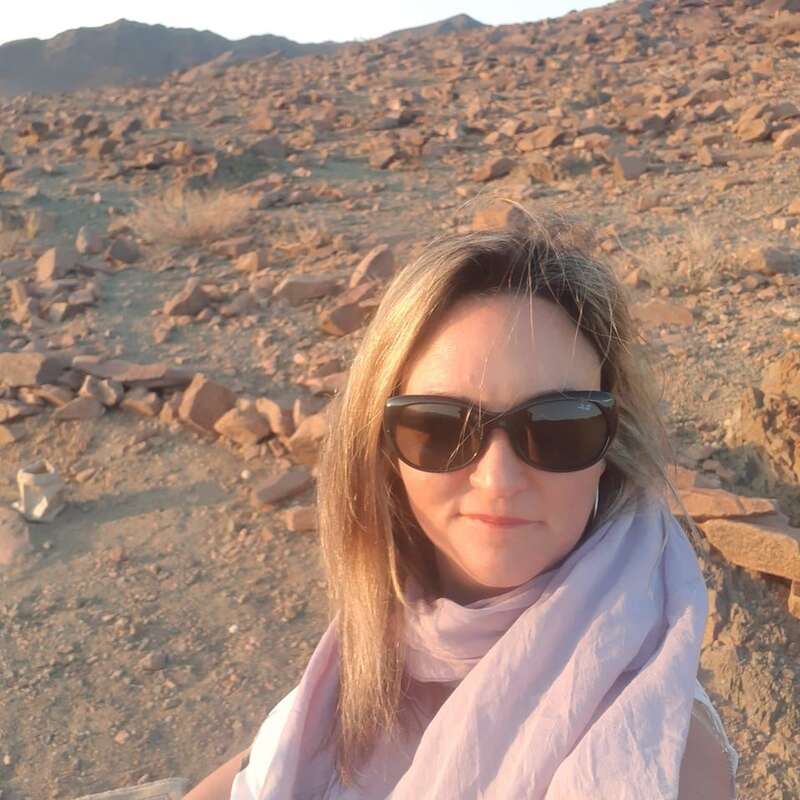About Little Kulala
The stylish Little Kulala is the most luxurious of the accommodation options on the 210km² private Kulala ...
... Wilderness Reserve, with its own access gate to the Namib-Naukluft National Park – and Sossusvlei. Gravel plains and low rolling sand dunes stretch out in front of the lodge, with the iconic dunes of the Namib Desert in the distance and the Naukluft Mountains to the rear providing a dramatic backdrop.
While Little Kulala isn’t looking as smart as it did when it was built, we’re pleased to note that plans are in place to update it during 2017. That said, its design is still original and interesting, and its stylish interiors are pleasing to the eye. It's a very comfortable lodge and, with a private entrance into the Namib-Naukluft, a very convenient base from which to explore the area – if you can tear yourself away from the creature comforts, that is!
Our view
While Little Kulala isn’t looking as smart as it did when it was built, we’re pleased to note that plans are in place to update it during 2017. That said, its design is still original and interesting, and its stylish interiors are pleasing to the eye. It's a very comfortable lodge and, with a private entrance into the Namib-Naukluft, a very convenient base from which to explore the area – if you can tear yourself away from the creature comforts, that is!
Accommodation
11 Chalets
Children
Best for 10+
Open
All year
Activities

4WD Safari

Guided walking safari

Helicopter

Hot air ballooning

Mountain biking

Private activities

Quad-biking

Sleeping under the stars
Traveller reviews of Little Kulala
77 real, un-edited reviews from Expert Africa's travellers.
Arrived 24 Apr 2025, 3 nights
"Little Kulala review"
Overall rating: Excellent
Arrived 24 Jan 2025, 2 nights
"Little Kulala review"
Overall rating: Excellent
Arrived 13 Dec 2024, 3 nights
"Little Kulala review"
Overall rating: Excellent
Arrived 15 Sep 2024, 2 nights
"Little Kulala review"
Overall rating: Excellent
Arrived 23 Apr 2024, 3 nights
"Little Kulala review"
Overall rating: Excellent
Arrived 23 Feb 2024, 3 nights
"Little Kulala review"
Overall rating: Good
Arrived 17 May 2023, 2 nights
"Little Kulala review"
Overall rating: Excellent
Arrived 27 Jan 2023, 2 nights
"Little Kulala review"
Overall rating: Excellent
Arrived 23 Oct 2022, 3 nights
"Little Kulala review"
Overall rating: Excellent
Arrived 7 Sep 2022, 3 nights
"Little Kulala review"
Overall rating: Excellent




















Expert Africa's gallery
When we travel we take lots of photos ourselves to give you a real and un-edited view of the safaris. See our 61 pictures and 1 videos of Little Kulala to get the candid view.
View gallerySafaris visiting Little Kulala
Just ideas, we'll always tailor-make a trip for you
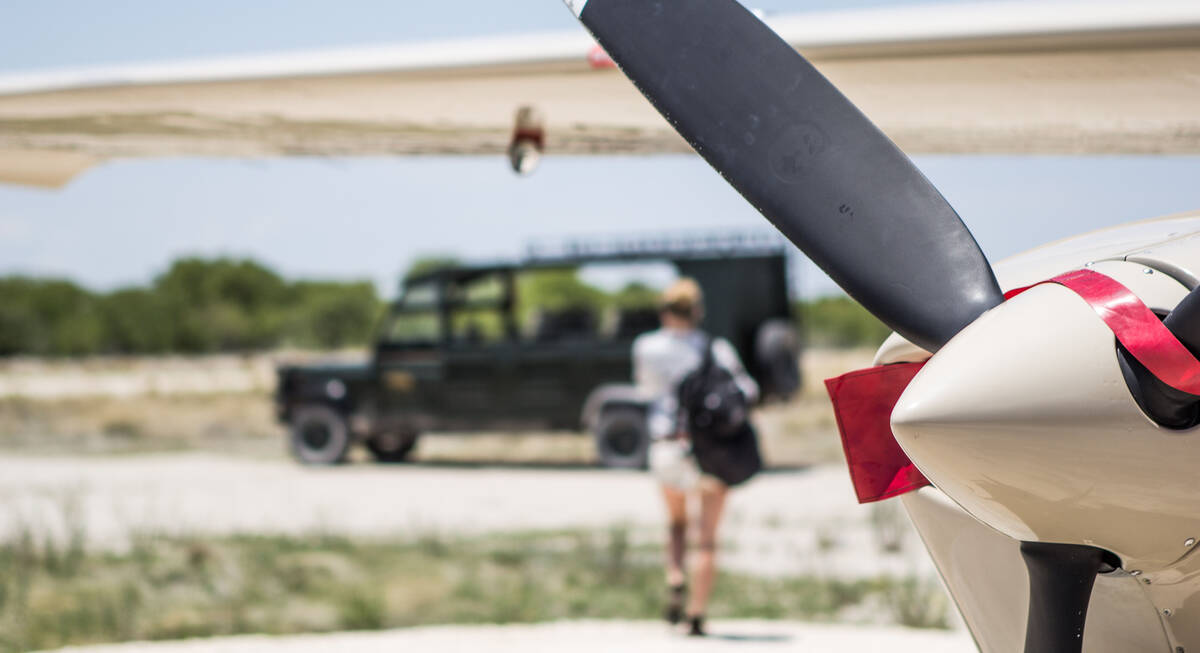
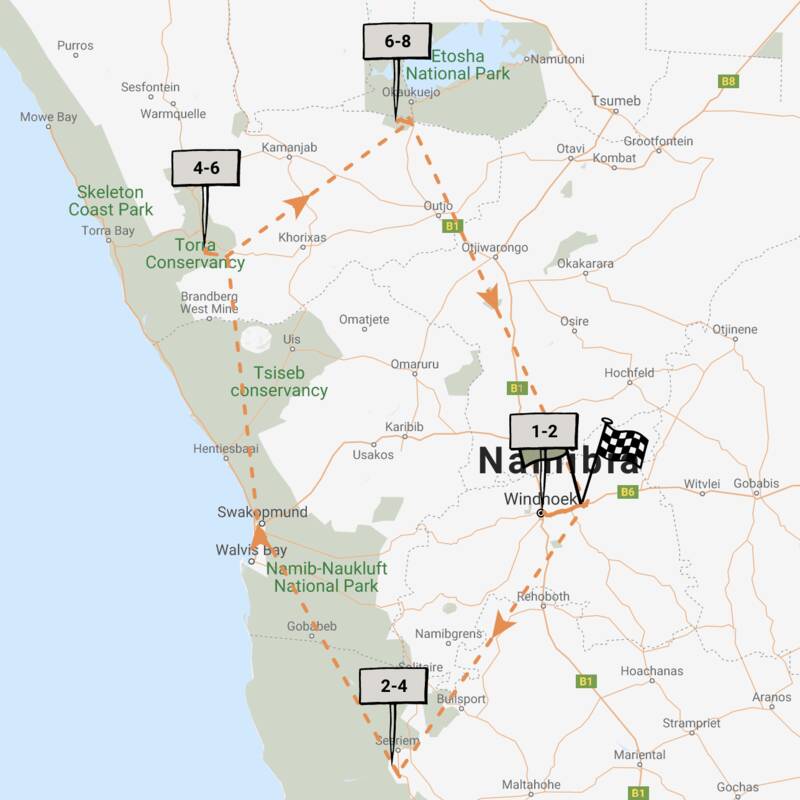
Bateleur Fly-in Safari
7 days • 4 locations • 1 country
WINDHOEK AIRPORT TO WINDHOEK AIRPORT
Classic fly-in Namibian safari staying at excellent camps. Explore Sossusvlei’s dunes and track Damaraland’s desert elephants before a safari in Etosha. Incredible scenery, good wildlife viewing and authentic cultural experiences.
Visiting Namib-Naukluft, Damaraland and 2 other areas
US$9,040 - US$9,510 per person
Little Kulala: Our full report
The stylish Little Kulala is the most luxurious of the accommodation options on the 210km² private Kulala ...
... Wilderness Reserve, with its own access gate to the Namib-Naukluft National Park – and Sossusvlei. Gravel plains and low rolling sand dunes stretch out in front of the lodge, with the iconic dunes of the Namib Desert in the distance and the Naukluft Mountains to the rear providing a dramatic backdrop.
The red clay exterior of Little Kulala fits in suprisingly well with its environment, yet belies the stylish and somewhat modern interior. Built over three levels, its main central area has a high thatched roof with four peaks. Neutral earthy tones dominate the spacious interior, whose whitewashed wooden floors were apparently designed to mimic the white clay surface at Dead Vlei.
Through the reception area, curved stone walls open up to reveal an open- plan dining area, bar and lounge. The lack of sharp angles lends a rather organic feel and full-length mirrors add to the feeling of space. Large glass doors open out onto a partly thatched deck, where camelthorn trees are incorporated into the overall design. Meals are often served out here, although during the colder winter months (about July to August) dinner is usually taken inside, where a crackling fire is lit in a large stone fireplace. Little Kulala's well-stocked wine cellar, with a good selection of fine wines, is also used on occasion for private dining.
The top level of the main building is devoted to a library. Clay pots, sculptures and hand-woven baskets of various shapes and sizes sit amongst scatter cushions, bean bags and a rather unusual shaggy-wool chaise longue. Here guests can take their pick from a selection of reference books, board games and a couple of computers with internet access. This is usually the area of the lodge with the strongest WiFi signal.
Round the side of the main building is a small pool and pool deck, where comfortable cushions under thatch provide a welcome retreat from the harsh sun. It's also a romantic spot for dinner, on request, when the weather is fine.
Sandy pathways lead from either side of the main area to Little Kulala's 11 well-appointed chalets, or 'kulalas' (meaning 'to sleep'). One of these is a family unit, with two separate en-suite bedrooms linked by a shared deck. All are raised on whitewashed wooden decks, and each is bounded by a bamboo-stick fence with a gate, making them very private.
Each chalet has a private deck with a thatched open-air lounge area, a table with chairs for private outdoor dining, a couple of sunloungers and a very small plunge pool. Steps lead up onto a rooftop terrace where, if you wish, it's possible to sleep out under the stars.
Inside, the colours are all pale-earth tones, in harmony with the desert landscape. In the spacious, air-conditioned bedroom, double or twin beds stand on a small raised wooden platform, with views through large glass doors of the surrounding desert. To the front, a lounge area has a comfortable sofa and a writing desk for when inspiration strikes.
A tall cement bed-head, with small pebbles 'cascading' down strings, doubles as a room divider, discreetly hiding a tea and coffee station, and a stocked minibar/fridge. This leads to the en-suite bathroom with twin shower heads and handbasins, and a separate toilet. A private courtyard at the back incorporates an outdoor shower. Bathrobes, a hairdryer and lotions and potions are thoughtfully provided.
Most activities are included at Little Kulala, and there is a choice. Top among these is an early-morning excursion to Sossusvlei. The lodge shares a private entrance gate to the Namib-Naukluft National Park with its less opulent sibiling, Kulala Desert Lodge. This bypasses the main gate at Sesriem, allowing early access to the park so that Kulala's guests can make the most of the early-morning light on the dunes. This excursion can be extended to incorporate Sesriem Canyon, a trip of up to eight hours that includes a picnic lunch.
Much shorter afternoon nature drives are offered on the Kulala Reserve itself, and the guides know some spectacular spots to watch the sunset with a drink. If you'd like to stretch your legs, guided walking trails are possible as long as a walking guide is available. (NB: It's essential that you read the Quadbike warning in the 'Health & Safety' section below for our comments on insurance issues regarding this activity.)
For a touch of relaxation, a small range of spa treatments are also available in the comfort and privacy of your own room.
Weather permitting, and at extra cost, early-morning balloon excursions over the dunes are a further possibility and while some might not agree, we think they're worthwhile. These can be pre-arranged or organised while at the lodge.
Geographics
- Location
- Namib-Naukluft National Park, Namibia
- Ideal length of stay
- We recommend at least two nights at Little Kulala to visit the dunes at Sossusvlei and Sesriem Canyon. Three nights is recommended if you want to fit in a hot-air balloon flight.
- Directions
- The entrance to the Kulala Wilderness Reserve is approximately 17km south of Sesriem off the C27. It is then a further 8km along a well-signposted route to the lodge. There is shaded parking near reception.
- Accessible by
- Self-drive or Fly-and-Transfer
Food & drink
- Usual board basis
- Full Board & Activities
- Food quality
- On our last visit to Little Kulala, in May 2024, the food was really delicious and there was plenty of choice.
We had a substantial early breakfast before departing on our morning activity that included cereals, fruits, yoghurts, juice, toast, muffins, cold meats, and a cheese platter, as well as cooked options.
Although we didn’t have lunch during our stay, if the other meals are anything to go by then we'd expect it to be of a high standard.
At dinner we were offered a choice of curried carrot soup or a smoked venison carpaccio salad for starters. For our main course there three options: a tasty chicken casserole with couscous, grilled beef fillet with a red wine sauce and potato gratin, or a vegetarian mushroom and aubergine tagine. This was followed by a selection of cheeses and a scrumptious sticky date and ginger pudding. - Dining style
- Individual Tables
- Dining locations
- Indoor and Outdoor Dining
- Further dining info, including room service
- Yes
- Drinks included
- Soft drinks, house wine and local spirits are included at the lodge. Fine wines, champagne and imported spirits and liqueurs are not included and are charged as extras.
Due to the high fluoride content of the water in this area, it is not recommended to drink from the taps. Drinking water is available from a cooler in the main area, and there is bottled water in the minibars.
Special interests
- Honeymoons
- Little Kulala can be a very romantic destination on your Namibian honeymoon. Each chalet has its own plunge pool, and sleep-out platform. Stay here and enjoy romantic dinners on your private deck with stunning views of the surrounding desert.
- See ideas for Honeymoons in Namibia
- Photography safaris
- The Namib Desert and Sossusvlei are a dream for photographers in Namibia: huge apricot dunes with knife-edge ridges beneath blue sky. Little Kulala stands in the desert with breathtaking views: camelthorn trees in front of its main area, and mountains and dunes in the distance.
- See ideas for Photography safaris in Namibia
- Wellbeing
- The remote, unspoilt wilderness of the Namib Desert is the perfect place for self-reflections and relaxation but to really unwind why not enjoy a treatment or two from the Little Kulala Spa.
- See ideas for Wellbeing in Namibia
- Luxury safaris
- A comfortable rooftop terrace with a daybed is not only perfect to soak up the sun during the day but also a great option to sleep under the stars. Little Kulala is a smart and luxurious lodge offering delicious dining and a range of fine wines from their own wine cellar.
- See ideas for Luxury safaris in Namibia
Children
- Attitude towards children
- Well-behaved children over the age of six are welcome.
- Property’s age restrictions
- Little Kulala has a minimum age of six years old for children to stay. Families with children between six and 12 years will need to pre-book and pay for private activities.
- Special activities & services
- None
- Equipment
- None. However, the camp does have a family unit, which is two en-suite bedrooms separated by a deck. A limited number of triple rooms can be made up.
- Generally recommended for children
- While children over six years old are welcome, we feel that Little Kulala has a very adult atmosphere where solitude is encouraged. Thus we think that families with older children are likely to enjoy the camp more, and that those with younger children might be more at home at the exceptionally family- friendly Kulala Desert Lodge.
- Notes
- Neither the pool at the main area nor the plunge pools are fenced in. Children must be under the supervision of their parents at all times.
Our travellers’ wildlife sightings from Little Kulala
Since mid-2018, many of our travellers who stayed at Little Kulala have kindly recorded their wildlife sightings and shared them with us. The results are below. Click an animal to see more, and here to see more on our methodology.

100% success

58% success

50% success

37% success

7% success

0% success

0% success

0% success

0% success

0% success

0% success
Communications
- Power supply notes
- There are plug points in each chalet for charging camera batteries, phones etc. Hairdryers are supplied.
- Communications
- There is usually cellphone reception at Little Kulala, but it is often patchy. The camp has guest computers and WiFi, which guests are welcome to use in the upstairs library. However, guests are requested not to use any phones, iPads or computers elsewhere in the main area.
- TV & radio
- There are no radios for TVs for guest to use.
- Water supply
- Borehole
- Water supply notes
- All the chalets have showers and handbasins that are plumbed in, as well as flushing toilets.
Sustainability

Rehabilitation of Kulala Wilderness Reserve
Little Kulala and Wilderness Safaris have played an important role in the creation of Kulala Wilderness Reserve. As the location of Little Kulala had previously been used for subsistence goat farming, wildlife was very scarce. In the mid-90s, when Wilderness Safaris started operating in the local area, a significant program was launched to remove internal fences in order to recover the health of the ecosystem which brought wildlife back. Then, while fences between Kulala Wilderness Reserve (KWR) and the Namib-Naukluft National Park were kept, the ones dividing the KWR and the Namib Rand Nature Reserve were abandoned, thus facilitating migration of wildlife, and expanding biodiversity. A series of plans were also implemented such as anti-poaching, fence patrols, snare sweeps and water provisioning.
Logistics and research activities have been undertaken to assess the rehabilitation of this 37,000-hectare area after years of intensive subsistence farming. Almost 20 years ago, the Small Carnivore Research Project studied bat-eared foxes on the reserve as an indicator species for land rehabilitation, followed by studies on aardwolf, black-backed jackal, Cape fox and African wildcat.
Nowadays, Little Kulala can arrange private tours to the dunes of Sossusvlei to explore the dramatic Kulala Wilderness Reserve. This provided a rewarding opportunity for guests to encounter hidden gems and valuable species such as gemsbok, black-backed jackal, ostrich and springbok. Other activities include nature drives, walking trails, guided quad-biking and scorpion night walks.
See more great sustainability projects in Namibia
Health & safety
- Malarial protection recommended
- No
- Medical care
- The camp management is trained in first aid and a doctor is on call (on the phone) 24 hours. There is currently a small clinic in Sesriem, staffed by a nurse. In a medical emergency, a traveller would be flown during daylight hours to Windhoek.
Quadbike warning: Quadbiking is sometimes available as an activity in this area. As with any potentially dangerous activity, it’s vital that you take responsibility for ensuring that you have adequate travel insurance prior to getting involved. Be aware that some insurances cover quad-bike activities only for bikes with lower engine ratings: check such clauses particularly carefully before you get on a bike. - Dangerous animals
- Moderate Risk
- Security measures
- Little Kulala is in an isolated location on a private reserve in the desert; there is no additional security here.
- Fire safety
- Each of the chalets has a fire extinguisher and there are fire extinguishers in the main area.
Activities
4WD Safari
Guided walking safari
Helicopter
Hot air ballooning
Mountain biking
Private activities
Quad-biking
Sleeping under the stars
Extras
- Disabled access
- Not Possible
- Laundry facilities
- Laundry is included. If collected in the morning it is usually returned the same day, weather permitting. A small mesh bag is supplied for underwear, which will be washed and returned in the bag. Occasionally laundry services may be limited by the availability of water in this desert environment.
- Money
- There are no currency-exchange facilities at Little Kulala. There is a safe in each of the chalets.
- Accepted payment on location
- Mastercard and Visa debit and credit cards are accepted by the camp. Cash payments may be made in Namibian dollars, South African rand, pounds sterling, US dollars and euros.
Plan and book your trip with Expert Africa
All of our trips are tailor-made, so we'll always adapt them to suit you. Talk to an Expert and let us plan and arrange your perfect trip.

Talk to an Expert
Call or email us now! We’ll match you with the Specialist in our team who is best suited to help you. Then together we can start planning your trip.

Set up your itinerary
Based on our experience and your ideas, your specialist will create a detailed, costed itinerary. We’ll refine it together, until we have a trip that you’re perfectly happy with.

Prepare for your trip
The same Specialist will make the seamless arrangements for your trip, send you detailed travel documents, and be available to answer any questions before you depart.

Travel with peace of mind
After you set off, you’ll be cared for by our partners in Africa, most of whom have worked with Expert Africa for decades. And if you ever need us urgently, we’re available 24/7.

When you return
We love to learn about your trip, and so will always be grateful if you’ve the time to give feedback to your Specialist when you return.
Little Kulala's location
Look closer at the environment and surroundings of Little Kulala.
Excursions from Little Kulala
Optional extra day-trips and excursions possible whilst you're staying at Little Kulala. Talk to us: these are usually best arranged before you go.
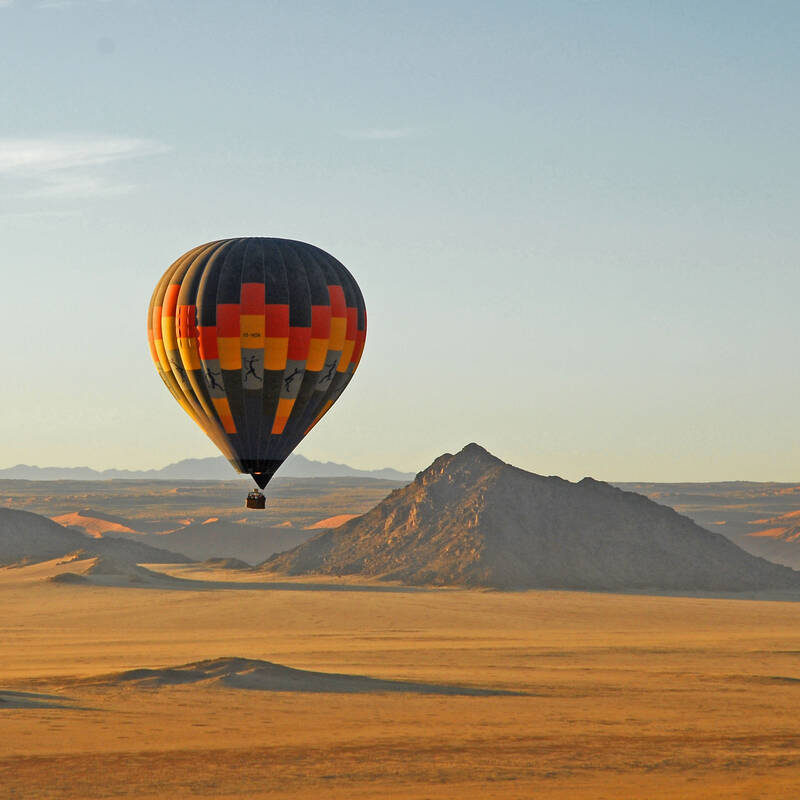
Ballooning in the Namib Desert
Half day, including breakfast
Ballooning over the world’s oldest desert is an experience you shouldn’t miss. Enjoy spectacular views as the sun rises over the dune-covered plains and rocky mountains of the Namib Desert. You may even spot the occasional oryx or black-backed jackal punctuating the landscape below.
More about Ballooning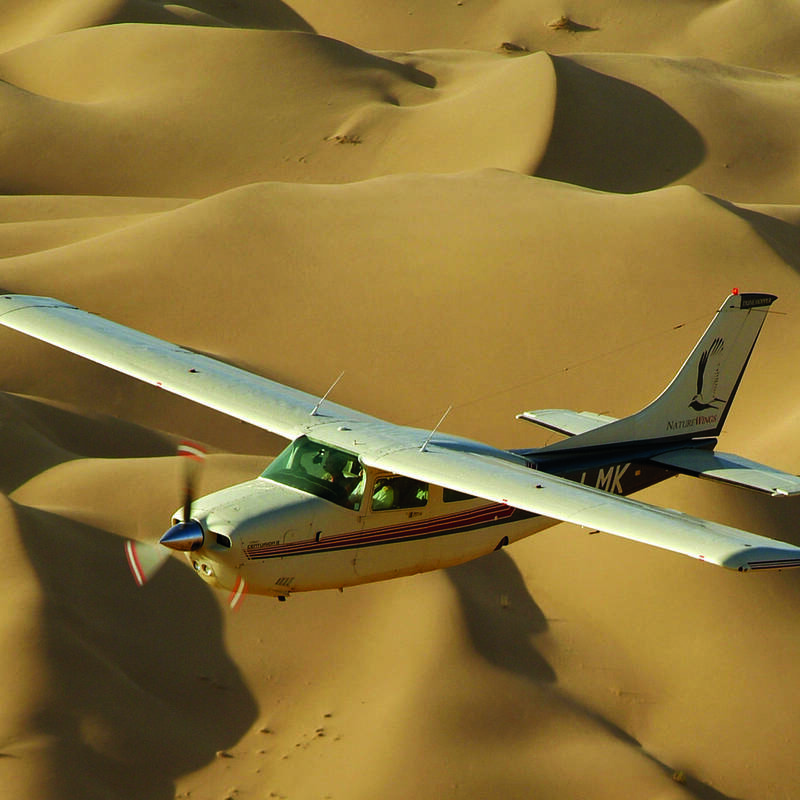
Scenic flights in Namibia
Variable, depending on the flight
Namibia is famed for its stark beauty and boundless desert vistas and there is no better way to soak these in than from the air. A scenic flight gives you a unique perspective on this stunning and varied country, and may even provide a bird’s-eye view of areas that are out of reach to those restricted to terra firma.
More about Scenic flightsOther lodges in Namib-Naukluft National Park
Alternative places to stay in this same area.

Kulala Desert Lodge
The comfortable Kulala Desert Lodge offers fantastic views of the Namib and a private gate to the Namib-Naukluft Park - a bonus on guided excursions.

Hoodia Desert Lodge
The owner-run Hoodia Desert Lodge offers a high standard of accommodation, delicious food and excellent service in a stunning, peaceful setting just 22km from Sesriem.
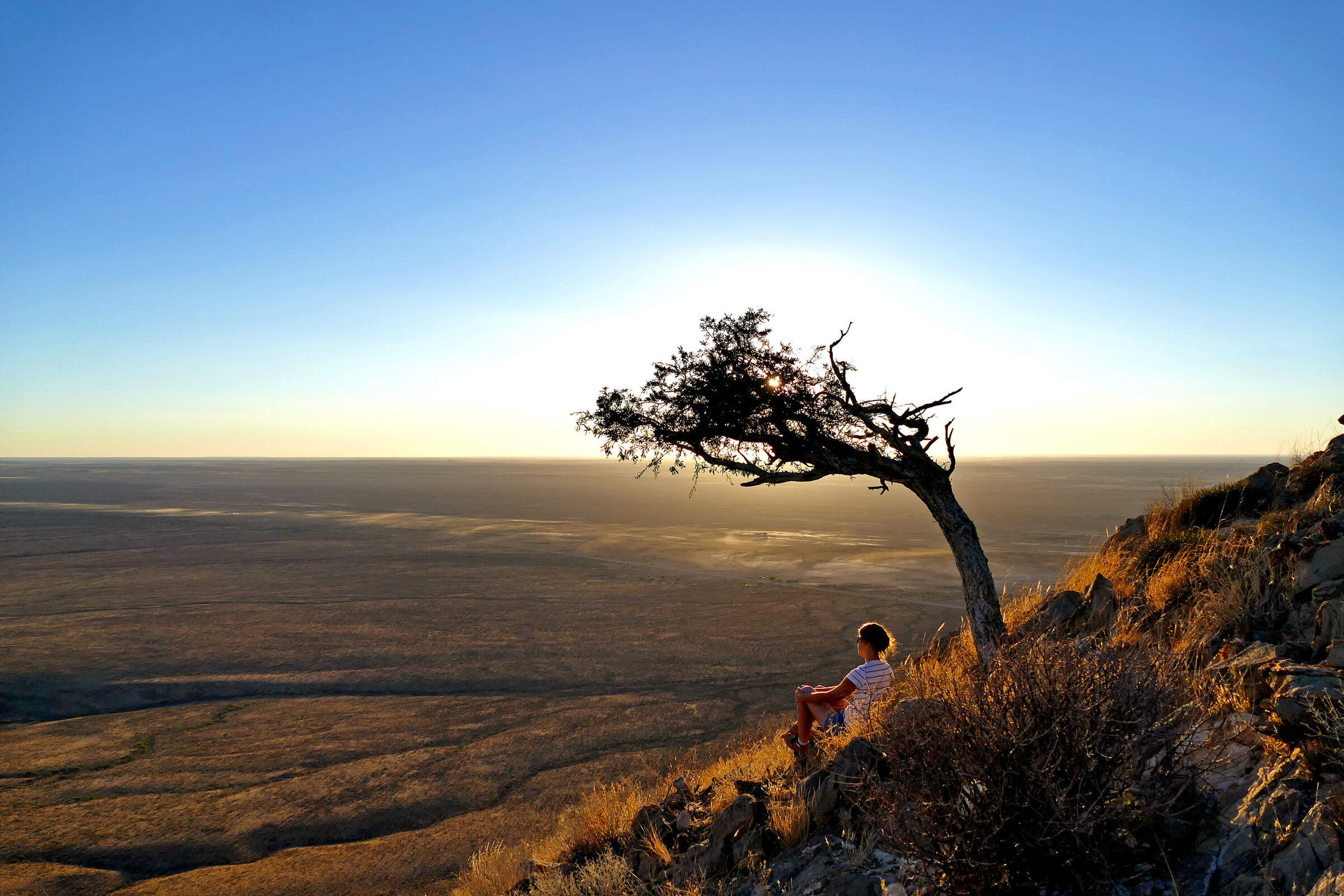
BullsPort Lodge & Farm
A traditional Namibian farm, BullsPort offers warm hospitality and a genuine rural experience, with excellent hiking and horseriding.

Sossus Dune Lodge
One of only two properties inside the Namib Naukluft Park, Sossus Dune Lodge has a superb location, for visiting the dunes.

Desert Homestead
With great-value accommodation in a lovely setting, Desert Homestead is a great base for exploring Sossusvlei.
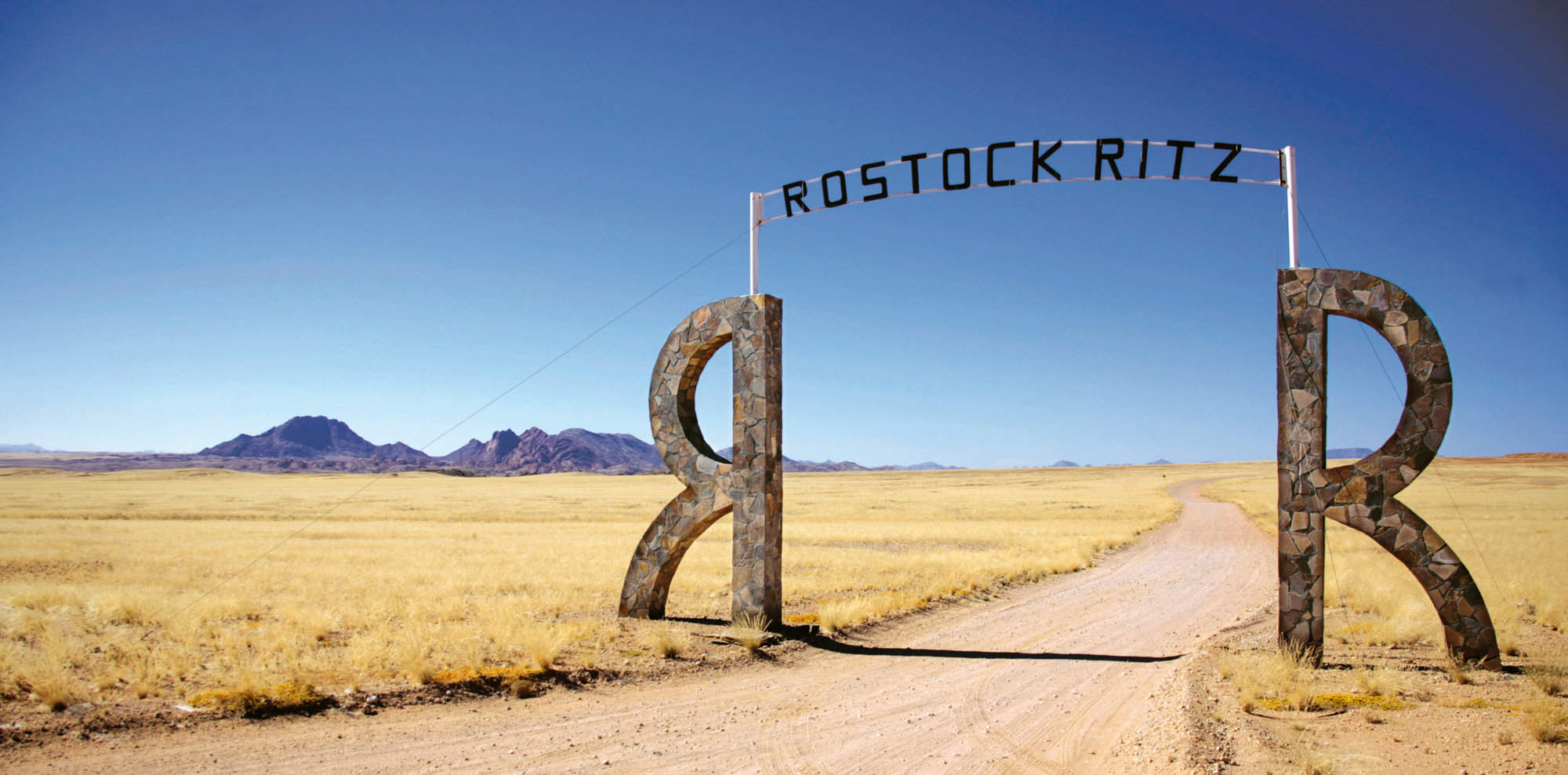
Rostock Ritz
The igloo-style chalets at Rostock Ritz offer exceptional desert views and make a convenient stopover between Swakopmund & Sossusvlei.

Barkhan Dune Retreat
Barkhan Dune Retreat is a welcoming lodge close to the impressive Spreetshoogte Pass, majors on hiking and relaxation.

Sossusvlei Lodge
Sossusvlei Lodge is one of the larger options in this area. However, it occupies a convenient location next to the Sesriem gate into the Namib-Naukluft Park.

Namib Outpost
About 30km from the gate to Sossusveli, Namib Outpost is a great base for exploring the dunes and surrounding attractions.

Dead Valley Lodge
Dead Valley Lodge is inside the Namib-Naukluft National Park, affording guests almost unprecedented access to the dunes.

Desert Camp
Desert Camp is an economical option for independent travellers who want to self-cater, and is well situated for access to Sossusvlei.

Desert Quiver Camp
Desert Quiver Camp is an economical option self-catering, well located for access to Sossusvlei.

Elegant Desert Lodge
Elegant Desert Lodge can be used as a base to visit Sossusvlei. It offers comfortable accommodation and facilities in the desert.

Corona Guest Farm
In central Namibia, north-east of the Namib-Naukluft, Corona Guest Farm offers a traditional farm stay and rugged hiking.

Namib Desert Lodge
Namib Desert Lodge is a good budget option in the Namib-Naukluft although, it is further from Sossusvlei than we'd typically suggest.

Sonop
Away from the hustle and bustle of the area immediately surrounding Sossussvlei, Sonop offers a luxurious stay in a remote part of the Namib Desert.

Camp Sossus
Camp Sossus is a offers top notch guiding in a remote wilderness area of the Naukluft Mountains with easy access to the famous dunes of Sossusvlei.

Desert Hills Camp
Conveniently located for the renowned dunes of Sossusvlei Desert Hills Glamping Camp offers a simple but comfortable tents in picturesque surroundings.

Le Mirage Lodge
Le Mirage Resort and Spa offers accommodation and a range of massage and beauty treatments in a Moroccan-style building in the desert.

Desert Grace
A stylish offering giving access to the famous dunes in the Namib-Naukluft National Park as well as to activities on a private nature reserve.
When to go to Namib-Naukluft National Park
Our month by month guide: What it's like to visit Little Kulala in Namib-Naukluft National Park
Jan
Feb
Mar
Apr
May
Jun
Jul
Aug
Sep
Oct
Nov
Dec
Namib-Naukluft National Park in January
January marks the start of the main rainy season. The Sossusvlei area may experience localised thunderstorms, creating a striking contrast against the red dunes. The Tsauchab River might flow, running through the usually dry Sesriem Canyon and out onto the desert sands. The landscape begins to green, offering a refreshing change and a beautiful backdrop. Many birds in the park are in full breeding plumage, their numbers increased by the arrival of summer migrant species. The Naukluft Mountains may see more reliable rains, bringing on nutritious vegetation for mountain zebras, springbok and oryx to feed on.
- Variable weather: hot days, possible rain
- Occasional localised thunderstorms
- Desert blooms if rain has fallen
- Wildlife dispersed, away from waterholes
- Few tourists, lower rates for accommodation
Our view
This is not a great time to visit
Weather in January
Namib-Naukluft National Park in February
February is often the wettest month in Namib-Naukluft National Park. The Sossusvlei area may experience short, spectacular thunderstorms, occasionally generating flash floods in ephemeral rivers. These events can temporarily transform the usually dry landscape, creating stunning photographic opportunities. The park's vegetation is at its greenest, with insects and smaller creatures uniquely adapted to the desert more easily seen. In the Naukluft Mountains, heavier rains can make some hiking trails more challenging but also more rewarding with lush vegetation. Wildlife viewing in open areas like Sossusvlei might be trickier due to the abundance of water and food allowing animals to disperse widely.
- Hot days, chance of rain and thunderstorms
- Desert vegetation lush if rains occurred
- Dramatic skies as backdrop for photographs
- Wildlife still dispersed across the park
- Low tourist numbers, great for solitude
Our view
This is not a great time to visit
Weather in February
Namib-Naukluft National Park in March
March usually sees the main rains tailing off in Namib-Naukluft National Park. The Sossusvlei area may still experience occasional afternoon thunderstorms, but these decrease in frequency as the month progresses. The landscape is often at its most vivid, with the red dunes contrasting beautifully against green vegetation, and often dry gravel plains now covered in waving grasses. This creates excellent photographic opportunities, especially at sunrise and sunset. The Naukluft Mountains may still have some water in streams, making it a good time for hiking. Wildlife viewing can be challenging as animals are widely dispersed, but patient observers may be rewarded with sightings of desert-adapted species.
- Weather becoming drier as month progresses
- Desert landscapes starting to dry out
- Animals looking healthy after rainy months
- Wildlife viewing improving in drier areas
- Few tourists, peaceful park experience
Our view
A good time to visit, with pros & cons
Weather in March
Namib-Naukluft National Park in April
April typically brings dry weather to Namib-Naukluft National Park, with a decreasing chance of rain. Temperatures begin to fall, making it more comfortable for activities like hiking in the Naukluft Mountains or climbing dunes in Sossusvlei. The park often remains verdant from the recent rains, with animals in fantastic condition. This is an excellent time for photography, with clear air and spectacular landscapes. Stargazers will enjoy increasingly clear night skies as the month progresses. Wildlife viewing may still be challenging in some areas as water and food remain in plentiful supply, allowing animals to roam widely. Birdwatching opportunities along the coast, especially Sandwich Harbour, remain impressive.
- Cooler nights, pleasant daytime temperatures
- Landscapes transitioning to golden hues
- Migratory birds begin to leave the park
- Wildlife easier to spot around water sources
- Easter can bring a surge in visitor numbers
Our view
A good time to visit, with pros & cons
Weather in April
Namib-Naukluft National Park in May
By May, Namib-Naukluft National Park is usually drying out fast. If rains have been good, the land remains green, creating a striking contrast with the red dunes of Sossusvlei. Wildlife starts to congregate around more permanent water sources, improving viewing opportunities. The air quality and clarity can be amazing, making this an ideal month for photography, especially in iconic locations like Deadvlei. Typical days are warm with crisp, clear mornings and blue skies, perfect for activities like hiking in the Naukluft Mountains or hot air ballooning over Sossusvlei. Evenings are cool, ideal for stargazing. At the coast, seal pups begin to take to the water and are playful around kayakers. May's good-value rates, increasingly good wildlife sightings, and crystal-clear air make it one of the best months to visit the park.
- Dry, warm days and cool nights
- Excellent photography conditions
- Wildlife returning to waterholes
- Ideal for hiking in Naukluft Mountains
- Moderate visitor numbers, good value
Our view
A very good time to visit
Weather in May
Namib-Naukluft National Park in June
Namib-Naukluft National Park is dry in June, with cloudless blue skies. Days are warm and dry, while nights can be cold, especially in desert areas like Sossusvlei. Early morning game drives or hikes require warm clothing. Wildlife viewing in areas like the Naukluft Mountains improves as animals are more active in cooler weather and seek out permanent water sources. The park isn't busy yet, allowing for a more secluded experience. Photographers benefit from superb air clarity and minimal dust of the early dry season. The contrast between the now-dry landscape and the vivid red dunes is striking, especially in early morning or late afternoon light. June is an excellent time for activities like sandboarding or quad biking in the dunes, as well as scenic flights over the park.
- Clear skies, cold nights and mornings
- Perfect conditions for stargazing
- Wildlife viewing productive at waterholes
- Great for dune climbing and desert walks
- Moderate accommodation rates available
Our view
A very good time to visit
Weather in June
Namib-Naukluft National Park in July
July in Namib-Naukluft National Park offers usually warm daytime temperatures and excellent wildlife sightings. The clear skies and dry conditions make for great photographs, especially of iconic locations like Sossusvlei and Deadvlei. Nights can be very cold, particularly in the desert areas, so warm clothing is essential for early morning activities. As vegetation continues to dry, animals congregate near water sources, improving wildlife viewing opportunities. The Naukluft Mountains may offer sightings of mountain zebra, gemsbok and other hardy desert species. This is a popular time to visit, so book accommodation and activities in advance. Consider seeing the park's vast landscapes and unique geological features by land and by air.
- Dry days, crisp nights ideal for stargazing
- Peak season for Sossusvlei visits
- Cool temperatures for hiking
- Popular time for hot air balloon rides
- Higher rates, book accommodations early
Our view
Fantastic: the very best time to visit
Weather in July
Namib-Naukluft National Park in August
August is the height of winter in Namib-Naukluft National Park. Expect cloudless skies and warm sun during the day, but nights can drop to freezing in desert areas like Sossusvlei. Dress in layers for early morning dune climbs or hikes. The landscape appears stark and harsh, emphasising the park's dramatic geology and beautiful colours. Look out for unique desert creatures, such as the toktokkie beetle standing on his head to catch dew droplets in this dry time. This is the most popular time to visit, especially for families, so book early. Activities like hot air ballooning over Sossusvlei are particularly popular now, offering stunning views of the desert landscape in the crisp morning air.
- Dry climate, warm days and cold nights
- Peak season for park visits and activities
- Sossusvlei and Deadvlei highly photogenic
- Sandboarding and quad biking popular
- Advance booking essential for lodges
Our view
Fantastic: the very best time to visit
Weather in August
Namib-Naukluft National Park in September
September in Namib-Naukluft National Park brings blue cloudless skies and the occasional windy day. As the month progresses, days and nights get warmer. The air becomes dustier, creating atmospheric conditions for photography, especially during golden hour at Sossusvlei and Deadvlei. Desert animals congregate around remaining water and food sources. It's a popular time for visitors, particularly safari enthusiasts. The contrast between the parched landscape and the vivid red dunes is at its most striking. Humpback and Southern Right whales can be spotted off the coast whilst on a marine cruise.
- Warming temperatures, remaining dry
- Excellent month for wildlife viewing
- Naukluft Mountain hikes highly enjoyable
- Whales can be seen along the coast
- High season rates, popular travel time
Our view
Fantastic: the very best time to visit
Weather in September
Namib-Naukluft National Park in October
October is usually the hottest and driest month in Namib-Naukluft National Park. Temperatures can exceed 40°C/104°F, especially in the Sossusvlei area. The end of the dry season sees wildlife watching at its best, particularly around water sources. The stark beauty of the desert is at its peak, with the red dunes of Sossusvlei standing out dramatically against the cloudless sky. This is an excellent time for photography, with dust haze making for spectacular sunsets. Activities like early morning balloon rides or kayaking on cool waters are popular. October is popular among wildlife enthusiasts, but visitor numbers can decrease towards the end of the month, allowing for last-minute bookings.
- Hot and dry, true desert conditions
- Prime time for viewing desert-adapted wildlife
- Sossusvlei dunes at their most dramatic
- Scenic flights offer spectacular views
- Peak rates, book well in advance
Our view
A very good time to visit
Weather in October
Namib-Naukluft National Park in November
November in Namib-Naukluft National Park can be unpredictable. Early in the month, conditions are often still hot and dry, similar to October. As the month progresses, there's an increasing chance of afternoon thunderstorms, particularly in the Naukluft Mountains. These storms can create spectacular photographic opportunities, especially when lightning illuminates the desert landscape. Any rain quickly brings new life, with desert-adapted plants springing up rapidly. This is an excellent time for birdwatchers, with migrant species arriving. Wildlife may begin to disperse if rains come, making game viewing more challenging but animals look healthy, with shiny coats, due to the increase in food. The changing conditions create a dynamic environment, offering visitors a unique perspective on the desert ecosystem.
- Variable weather as rainy season starts
- Possibility of dramatic desert storms
- Landscapes may start to green
- Wildlife dispersing if early rains fall
- Shoulder season, good value for visitors
Our view
A good time to visit, with pros & cons
Weather in November
Namib-Naukluft National Park in December
December is often a dry gap between the short November rains and the main rains in January in the Namib-Naukluft National Park. Occasionally the park experiences dramatic afternoon thunderstorms. These rains transform the landscape, with dormant plants springing to life and dry gravel plains quickly turning green. The contrast between the green vegetation and red dunes creates stunning visuals. Many animals give birth during this time, offering chances to see young wildlife. Birdlife is abundant, with many species in breeding plumage. The holiday season can make the park busier, especially around Sossusvlei, so early bookings are advisable.
- Hot days, possible afternoon showers
- Desert may bloom with early rains
- Migratory birds return to coastal areas
- Christmas brings increase in local tourism
- Mix of green and golden desert vistas
Our view
A good time to visit, with pros & cons
Weather in December

Looking for inspiration on where to travel next?
Visit our trip chooser to explore your options and find inspiration for your perfect African adventure
Inspire me
